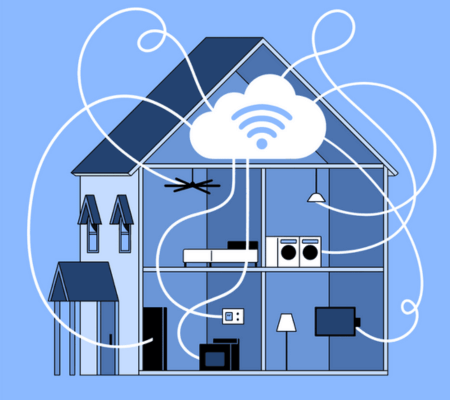As our world becomes increasingly connected, smart security cameras have become ubiquitous in our lives, providing surveillance for both public and private spaces. Although these cameras play an important role in maintaining safety, some individuals have explored ways to jam or disable them because of concerns about privacy and personal security.
By jamming or disabling the smart cameras, individuals can prevent their activities from being monitored or recorded, which can give them a greater sense of control over their own privacy. Additionally, disabling cameras can be a way to protect themselves from potential threats or hostile surveillance.
Table of Contents
Toggle1. The Rise of Surveillance of Smart Cameras
Smart security cameras have evolved from bulky and expensive devices to sleek and affordable tools that offer constant monitoring. They’re used in various settings, from retail stores and offices to residential neighborhoods and public spaces. However, the widespread use of cameras has sparked debates about the impact on privacy and civil liberties.
2. Understanding Security Camera Functionality
Before delving into the ways to potentially disrupt smart security cameras, it’s important to understand how they work. Most security cameras use wireless technology to transmit video feeds to monitoring stations or recorders. They operate on specific frequencies and use encryption to safeguard the data.
3. The Legality and Ethics of Jamming
Jamming security cameras raises legal and ethical concerns. Many jurisdictions have strict laws against jamming wireless signals, as it can interfere with legitimate communication networks, such as emergency services. Intentional jamming can lead to severe penalties, including fines and even imprisonment.
4. Risks and Consequences of Jamming
Attempting to jam security cameras can have unintended consequences. Beyond legal consequences, disrupting cameras could compromise the safety of others who rely on surveillance for protection. Moreover, tampering with security systems could escalate tensions or misunderstandings in sensitive areas.
5. Alternatives to Jamming
Instead of resorting to jamming, there are alternative strategies to consider for safeguarding your privacy:
- Opt for Physical Obstruction: Placing physical barriers, like curtains, blinds, or decorative panels, can obstruct the view of security cameras while maintaining your privacy.
- Use Decoy Cameras: Installing dummy cameras alongside real ones can create confusion and deter potential intruders while preserving the functionality of legitimate cameras.
- Consult Legal Experts: If you’re concerned about surveillance in your area, seek legal advice to understand your rights and explore lawful ways to address your concerns.
6. Embracing Technology Safely
While privacy is a valid concern, technology also offers ways to protect your privacy without resorting to jamming:
- Invest in Encryption: If you’re using security cameras on your property, ensure that the data they transmit is encrypted to prevent unauthorized access.
- Regularly Update Software: Keep your security cameras’ firmware up to date to patch vulnerabilities and improve their overall security.
- Utilize Virtual Private Networks (VPNs): If you’re accessing camera feeds remotely, use a VPN to encrypt your connection and prevent eavesdropping.
7. Engaging in Public Discourse
Instead of taking unilateral actions, consider participating in community discussions about surveillance and privacy concerns. Working collectively to address these issues can lead to more effective solutions while fostering a sense of shared responsibility.
8. Balancing Security and Privacy
It’s essential to strike a balance between security and privacy. Security cameras play a role in deterring crime and ensuring safety, but respecting individuals’ privacy rights is equally important. Finding common ground requires open dialogue and a willingness to explore innovative solutions.
9. The Future of Surveillance
As technology continues to advance, smart surveillance methods will also evolve. This includes the development of more sophisticated smart security camera systems that can adapt to various environments and offer enhanced privacy features.
Conclusion About How to Jam a Security Camera?
Our lives are deeply intertwined with technology, so it is vital that we approach privacy issues thoughtfully and responsibly. There are many challenges involved in jamming smart security cameras, including legal, ethical, and practical concerns.
Instead, choose alternatives that prioritize your privacy as well as the safety of others. We can shape a safer and more respectful digital environment by engaging in public discourse and embracing privacy-enhancing technologies.
Therefore, the decision to jam or disable a camera should be considered carefully.
FAQS
- How to Spot a Fake Security Camera?
- How to Run Security Camera Wires Through Walls?
- Can a Magnet Disable a Security Camera? Separating Fact from Fiction
- How to Connect Security Camera to TV Without DVR?
- Blink Outdoor vs Wyze V3: Latest Comparison in 2023










